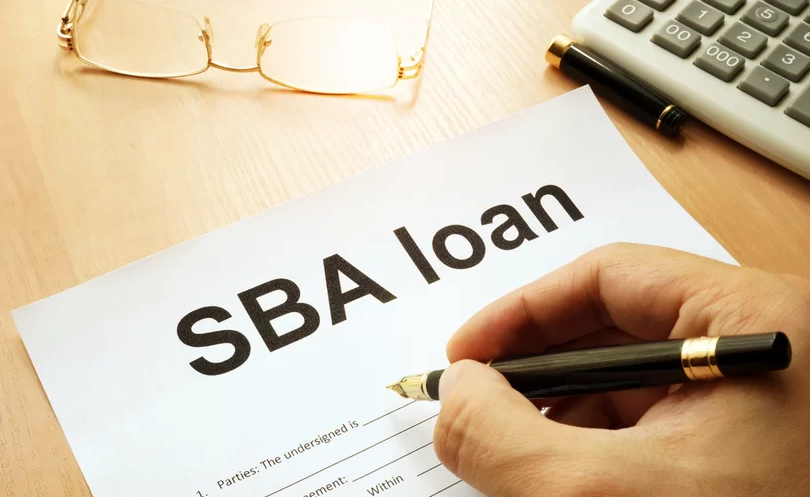From: businessnewsdaily.com
Three Brothers Bakery was founded by three brothers who endured the Holocaust, and has since survived four floods, a hurricane and a fire in recent years. Janice Jucker, a co-owner of the Houston-based bakery, said Three Brothers Bakery wouldn’t exist without the Small Business Administration (SBA).
“Our story is one of survival, and part of that survival has been the SBA loan program,” she said.
The company received two disaster-relief loans and recently got approved for a 7(a) loan through a local bank’s SBA program. The relief loans bridged the company until its insurance payments kicked in, and the 7(a) loan is going to build the business a new location on higher ground.
There’s a loan out there for every type of business, even those that don’t have the track record or credit to get approved from a conventional bank. The SBA makes sure of this, incentivizing conventional lenders to provide funds through its 7(a) and 504 loan programs to businesses that otherwise would have been rejected.
It pushes lenders to consider questionable loan applicants by backing between 75 and 90 percent of the small business’s loan. And unlike quick-hit alternative online lenders, the SBA program’s rates are low – hovering around WSJ Prime plus 2.75 percent.
The SBA provided around $25 billion in guarantees last year, according to Dianna Seaborn, director of the office of financial assistance in the SBA’s Office of Capital Access.
“We provide that guarantee that allows [lenders] to be more generous in their terms,” she said. “That generosity helps the small business in cash flow and repayment terms – it helps them to get financing when they’re startup businesses.”
Despite these rates and terms, and the elimination of major risk for the lender, SBA loans still carry some major differences when compared to conventional business loans – especially when it comes to the loan application process.
Alex Espinosa used to run SBA loan departments at various banks and now works as an SBA lending consultant through his company BOLD Lender. He said there are some barriers that both lenders and borrowers face when it comes to SBA loans.
“It’s very complicated to the average banker,” he said. “It’s not complicated once you’re mentored through the whole thing and spend a few years in it.”
At its core, SBA loans differ from conventional loans, because the borrower usually has a riskier financial profile compared to who would be accepted in a regular loan agreement. This means one thing: paperwork.
The SBA needs a lot more information from you and the lender to back the loan. However, by partnering with a bank or lender that has an experienced SBA department, Espinosa said the loans can be completed with minimal headaches. [Interested in alternative small business loans? Check out our best picks.]
SBA loans are more complicated
As with any government-backed process, there is a long list of regulatory rules and processes that lenders must abide by. This discourages some lenders and creates longer funding times, especially compared to conventional lenders or alternative online lenders.
“To get an SBA loan, the paperwork [requires providing] more documentation, … and the process to get approved … is going to be longer than some of the other small business loan products that are out there today,” said Joe Camberato, co-founder and president of National Business Capital.
This process can add to the overall timeline of acquiring an SBA-backed loan. Camberato, whose company specializes in advising small business owners and matching them with the right lenders, said the SBA process can take from 90 to 120 days. Espinosa said it can take at least 60 to 90 days. Jucker said that it took her business close to four months to get funding, but her situation was complicated and may have been a product of the disaster-relief loan the business applied for.
Either way, SBA loans are not quick loans, but they provide sustained funding at favorable terms and rates. Many alternative lenders may be able to provide lightning fast turnaround – sometimes providing funding in just a few days – but they aren’t subject to the same regulations and will almost definitely have higher rates.
SBA loans: Longer terms, lower rates
The maximum interest rate on an SBA loan is WSJ Prime plus 2.75 percent, which as of August 2018 was about 7.75 percent interest. Keep in mind, this is a maximum number. Jucker said she received a loan rate that was well below the listed WSJ plus 2.75 percent at the time of her loan.
The other advantage to SBA loans is they come with longer terms, which means lower monthly payments for business owners. Both 7(a) and 504 loans have terms that range from 10 to 25 years. Seaborn said this can help with cash flow, among other financial hardships for floundering and emerging businesses.
“There are controls in place,” she said, “that prevent predatory behavior in our program.”
Depending on your agreement, you could be set up with a fully amortized loan. This means you pay both interest and principal within every payment as the loan matures so that it’s completely paid off by the end of the agreed upon term. Some conventional loans come with balloon payments, or a period of payments after the term required to pay off the remaining principle. This can be crippling for some business owners.
SBA loans are more flexible
If your business experiences financial hardship, or you fall behind on payments for some reason, SBA loans have some flexible options to help you stay on your feet. Espinosa said companies may be eligible to defer payments or provide interest-only payments.
“The SBA has some flexibility that they allow the banks, which the banks don’t always use as they should when someone’s in trouble,” he said. “The last thing the SBA wants to do is have you foreclose.”
It’s easier to qualify
One of the biggest advantages to SBA loans is you can get a loan without the same qualifications required from a conventional lender. This makes the SBA program a great option for new businesses or businesses with limited collateral. Espinosa said an SBA loan will never be denied because of a lack of collateral.
“The rule is that the SBA will not turn down a loan for a lack of collateral, but the rule is they want all available collateral to secure the loan,” he said.
This likely will include a personal guarantee and other assets. Jucker said everyone who had a 20 percent stake or larger in her business had to provide personal and business financial documentation to the SBA, and they had to sign the loan agreement.
Bottom line
The SBA loan program may be ideal for your business, but it depends on your situation. Camberato said that SBA loans are a good option for businesses looking to make lasting expansions or improvements to their existing building, for example. He also said larger loans for bigger projects make for great SBA loans.
Whether you’re in the market for financing or not, Seaborn said the SBA has many resources to help business owners grow.
“We do a lot as an agency to support your understanding of what we do,” she said. There’s the “ability to access free counseling and support from small business development centers, business-plan writing, marketing feasibility, and those kinds of things, all the way to the point where you are in the market for financing.”








Leave a Reply
You must be logged in to post a comment.